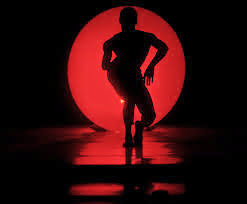THE POWER OF ATTENTION
a review of Azure Barton's stunning Awaa
By Matt Shapiro
 |
| Caught my attention |
What does it mean to grab the attention of an audience? Is that a good thing? It seems to be and yet it feels vaguely criminal, like purse snatching. Different art forms “grab the audience” and hold them in different ways and so it can be confusing, this assaultive aspect of art. As an active participant in the blockbuster world of pop culture and a faithful “art guy,” I’m struck by the differences and parallels between feature length films, installation, sculpture, painting and how they keep the viewer both interested and under their control. I’ve often enjoyed contemporary dance, both the choreography and the ability of the dancers, but I have never felt that I couldn’t look away.
All that changed on February 7th, 2014 at YBCA. Aszure Barton’s Awaa changed my perception of how dynamic and immediate dance can be. I was as involved as I am with film, installation, sculpture, painting, etc. The show incorporated brilliant light and projection work and a musical score from Lev “Ljova” Zhurbin and Curtis Macdonald that was arresting in its own right. The piece was as raw as the streets and flowing as the ocean—sorry, but sometimes the most hackneyed metaphors are the best.It was as scientific as it was expressive, and from start to finish there was not a finger movement out of place or a beat out of rhythm.
 |
| Nothing is ever simple; it's just something we wish for |
Awwa presents a series of simple relationships or at least initially they seem simple. By the end of the piece that simplicity would evolve into a complex racial debate and confusing emotions. The piece began with a stately paced violin sonata. In the midst of a flat, dimly lit stage, a white male dancer courted his white female counterpart. Their exchange was sexually charged and Barton expresses that charge with a choreography of flowing movements. They displayed not only grace, but also strength and a highly tuned sense of timing.
Following directly after that were a group of three black dancers who seemed almost identical. My immediate observation was that this dancing was reminiscent of street performance, stuff you can see on BART everyday. They danced in a jagged but extremely controlled style. It was borderline robotic. Then, suddenly they would morph into a kind of graceful classic dance, something close to or actually ballet. If that wasn’t enough, there were also improvised, expressive freak out dances. This relationship between the rough and sporadic and the sweet and graceful was one of the first moments in the piece that hinted at the racial explosions to come.
 |
| Complexity is beautiful |
Barton is clearly playing on stereotypical notions of black dance in opposition to more high culture forms like ballet and modern dance. By having her three black dancers go back and forth between the two, she sets up a dichotomy that turns out not to be a dichotomy. It’s a great conceptual move that is the product of some incredible choreography and dancing. All the idioms that she uses are beautifully executed and employed and this, too, breaks down our initial, easy dichotomies about what we call classic dance or black dance or whatever misleading appellations we use.
What came next was a scene that disturbed and confused me, but which made the piece quite powerful. The white woman met with two of the black men from the original trio. She carried one of them in her arms, while the other held her arm and walked extremely fast while crouching behind her. The one in her arms would jump off and sit behind her while the other would jump into her arms. This gesture was repeated over and over. Were they acting like children? Monkeys? Slaves? It was impossible to tell and made you feel uncomfortable for trying to figure it out. That’s when I knew Barton was two dance steps ahead me and all the way in my imagination.
 |
| Things can get uncomfortable |
Then all of a sudden you heard voices. Who were they? The trio, joined by the other white male dancers sat and dragged themselves across the stage in unison. Were they referencing a prison line? The music was dreary and there was little to no light on the stage. When the trio exited, one of them yelled out in a southern accent, “Yes, wash me down by the river!” At that point I was relieved that the piece recognized that these indeed were charged racial images and that I was right for trying to grapple with them.
Under a blood red light the dancers carried out balloons, ranging in size from a small ball to a large man. As the red light faded to white, the color of the balloons shifted and faded to a projection of the three black dancers faces that bent and conformed to surface of the balloons. The faces, corresponding to each dancer’s specific balloon, were making pouty faces, huge grins, puffing out their cheeks, licking their lips, etc. It was as amazing as it sounds and I’m quite sure that I’ve never seen anything quite like it—in any medium.
 |
| So beautiful! |

No comments:
Post a Comment